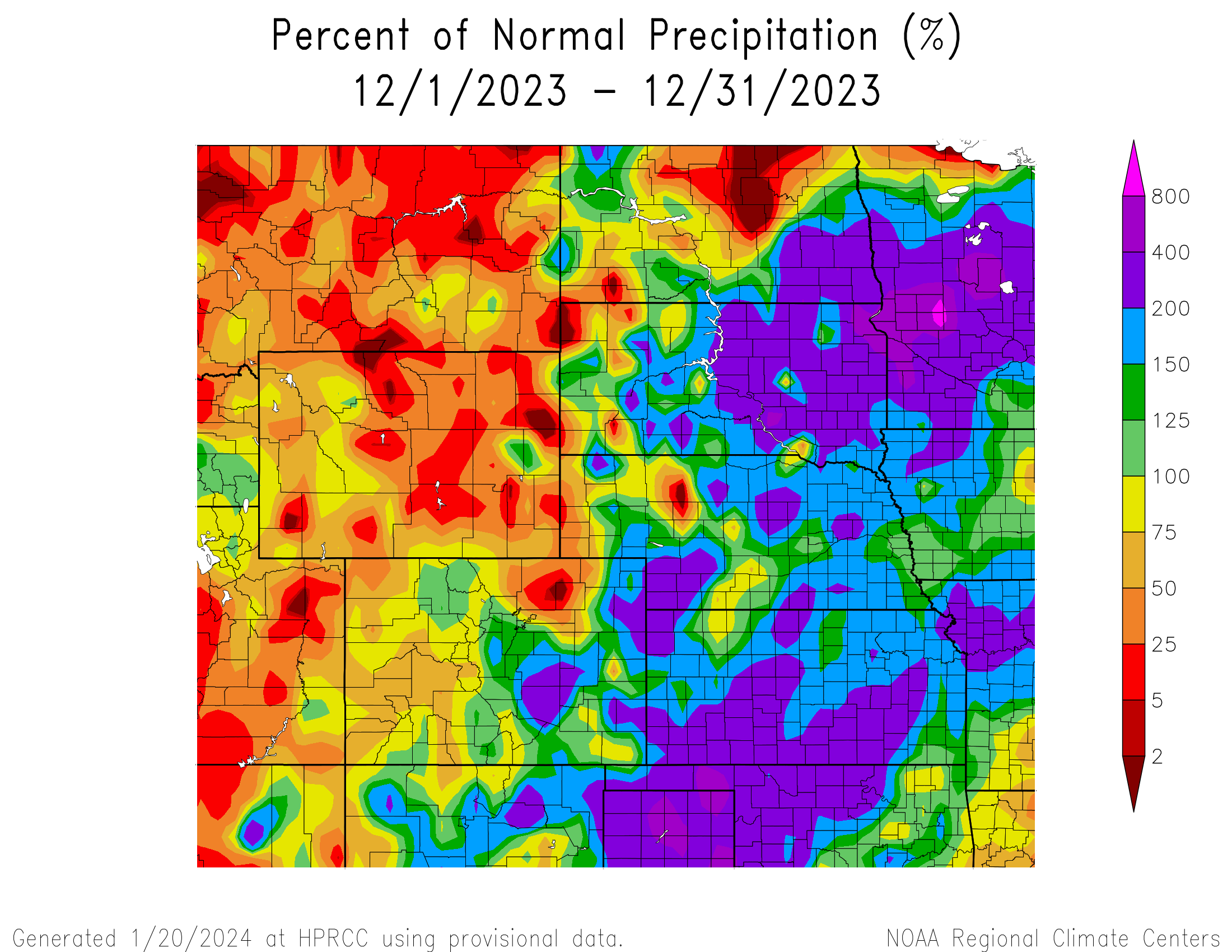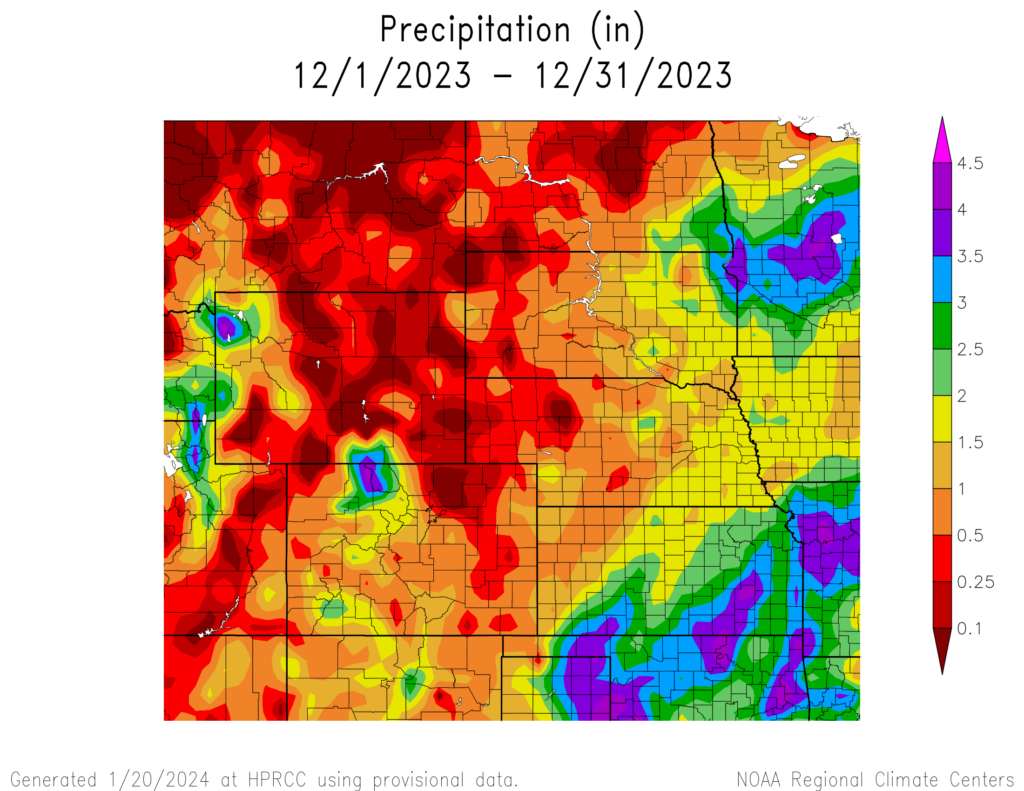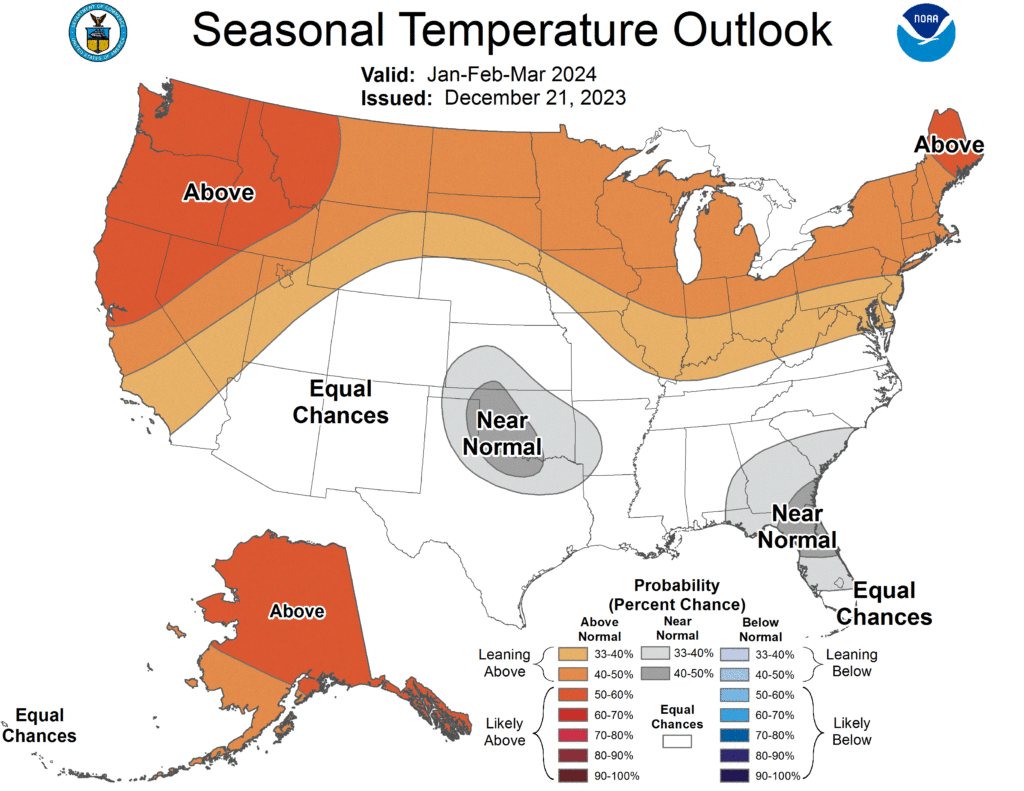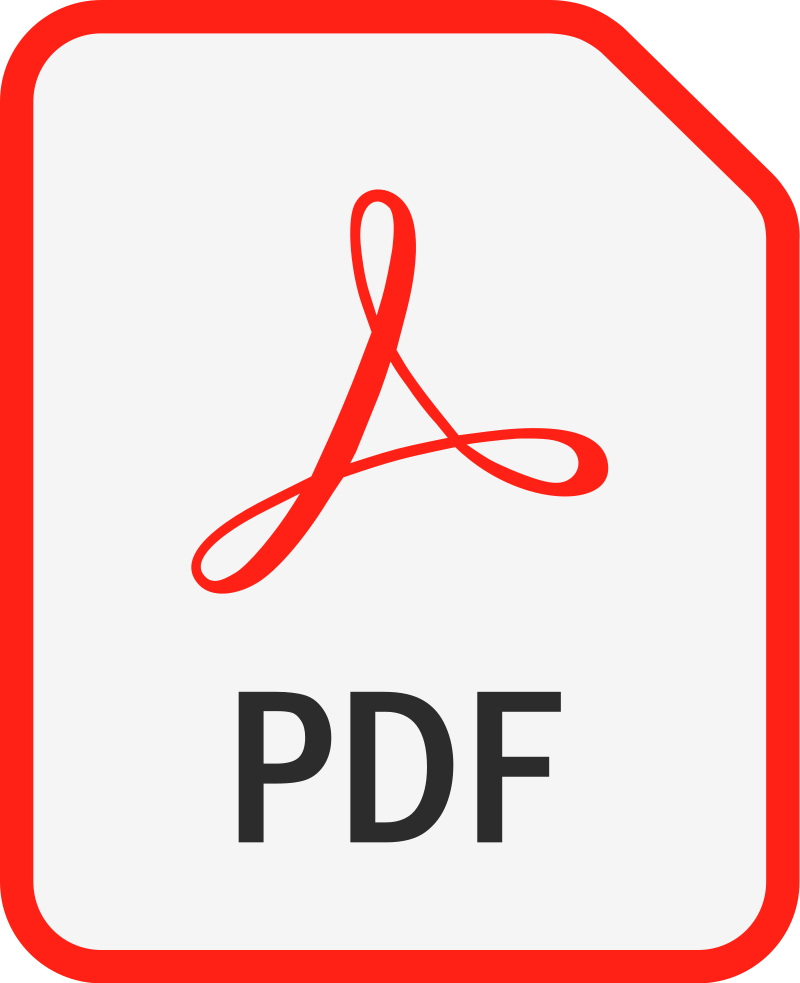
December 2023 Climate Summary
Sunrise over Flathead Lake in Montana, Photo Courtesy of Gannon Rush
Regional Breakdown
December ended in a similar fashion like both October and November. Exceptionally warm temperatures dominated the region, with a cold front pushing through late in the month but unable to prevent record warmth.
Temperatures were scalding hot in the Dakotas, with some locations breaking their previous monthly record by up to 6 degrees F (3.3 degrees C). Dozens of monthly records were broken, while every state in the region had locations ranking in the top 10 after nearly the entire High Plains was 3 degrees F (1.7 degrees C) or more above normal.
It was a dry month for much of the region but this condition changed with the front that pushed through around Christmas. Blizzard warnings were issued from northwestern Kansas into South Dakota on Christmas day, with 50 mph (81 km/h) winds and a combination of ice, sleet, and snow on one of the busier travel days for many. Interstate 80 was closed from Lexington, Nebraska to the Wyoming border, with hundreds of wrecks occurring. Interstate 70 in Kansas was also closed from Goodland to Denver, Colorado due to safety concerns.


Precipitation and Water Resources
The situation was gloomy heading towards the end of December, with much of the region still reeling from record to near-record dryness in November. However, conditions improved with portions of South Dakota receiving over 400 percent of their normal precipitation by the end of the month.
Precipitation totals were abysmal in parts of the Dakotas up until the 22nd. The maximum amount recorded the previous month in both states was just over an inch (2.54 cm) and December was not proving any better. Things rapidly turned around, with several days of beneficial precipitation in the form of rain and snow. Fargo, North Dakota recorded their wettest December, with 3.00 inches (7.62 cm) of precipitation. Across the border in South Dakota, Sisseton crushed their previous record of 2.03 inches (5.16 cm) and observed a whopping 3.61 inches (9.17 cm) of precipitation. Nearby Milbank recorded an even higher value of 4.31 inches (10.95 cm), just shy of the all-time December precipitation record for the state. There were also plentiful amounts of snow, with 16.0 inches (40.64 cm) reported near the town of Gregory.
The western parts of the Plains were not as lucky this month, with portions of Wyoming reporting no precipitation. Shoshoni and Basin reported no precipitation to tie their driest month on record, while Casper and Sheridan both ranked 2nd driest after minimal amounts. Casper also recorded their lowest December snowfall, with only 1 inch (2.54 mm) of snow reported.
Mountain snowpack continued to be below normal for many of the basins in the west. Snow water equivalent (SWE) is below 70 percent in for much of Colorado and Wyoming at the beginning of January. Streamflow remained well-below normal in the eastern portions of Kansas and Nebraska, with record lows reported.


Temperatures
To say December was unseasonably warm would be an understatement. Parts of the Dakotas were a record-breaking 15 degrees F (8.3 degrees C) above normal, even with a significant cool-down occurring.
Fargo, North Dakota not only broke their monthly record but also tied the record for the warmest December for the state. The average temperature was 31.5 degrees (-0.3 degrees C), easily breaking the previous record of 25.9 degrees F (-3.4 degrees C) and the normal of 15.7 degrees F (-9.1 degrees C). Elsewhere in the state and in South Dakota, just about every major city observed record warmth.
Outside of the Dakotas, record to near-record warmth impacted every state. Norfolk, Nebraska surpassed their record, while McCook tied for 2nd. Further to the west, Sheridan, Wyoming ranked 2nd as well. Rounding out the region, Colorado and Kansas both had at least one major location rank in the top 5 warmest.
Drought Conditions
Drought conditions improved this month, even though the amount of abnormal dryness (D0) slightly increased. The heavy snowfall in Kansas towards the end of November was noticeable, with large improvements in the state. Overall, abnormally dry to exceptional drought (D0-D4) conditions were reduced by over 3 percent.
Eastern Kansas greatly benefited from the heavy snow, with severe to exceptional drought (D2-D4) reduced by 23 percent. Currently, a little over 19 percent of the state is experiencing D2-D4, the lowest percentage since the beginning of February 2022. The dryness in Wyoming has begun to take its toll, with D0 increasing by nearly 14 percent this month. D0 was also increased by nearly 10 percent in South Dakota, however, the heavy precipitation towards the end of December should lead to improvements. Elsewhere in the region, other localized improvements and degradations were observed.


Department of Agriculture (USDA), National Drought Mitigation
Center, U.S. Department of Commerce, and the National Oceanic and
Atmospheric Administration (NOAA). For current Drought Monitor
information, please see: http://droughtmonitor.unl.edu/
Climate Outlooks
According to the Climate Prediction Center, an El Niño Advisory has been issued and is likely to be a moderate to strong event. For more information, visit https://www.cpc.ncep.noaa.gov/products/analysis_monitoring/lanina/enso_evolution-status-fcsts-web.pdf
The National Weather Service’s long-range flood outlook indicates low chances of flooding through March. According to the National Interagency Fire Center (NIFC), fire potential will be normal across the region through April.
The seasonal temperature and precipitation outlook presented below combine the effects of long-term trends, soil moisture, and when applicable, the El Niño Southern Oscillation (ENSO). To learn more about these outlooks, please visit http://www.cpc.ncep.noaa.gov.
Temperature
The three-month temperature outlook shows an increased chance of above-normal temperatures across the northern United States. Increased chances of above-normal temperatures are present in the Dakotas and Wyoming.

Precipitation
The outlook for the next three months indicates below-normal precipitation in the northern part of the country and the Great Lakes, while above-normal precipitation is favored for the southeastern and west-central United States. Increased chances of below-normal precipitation are present in parts of North Dakota and Wyoming, while above-normal precipitation is favored for Colorado, Kansas, and Nebraska. Equal chances of above-, below-, or normal precipitation are present in the rest of the region.

Drought
The U.S Seasonal Drought Outlook released on December 21st indicates drought conditions will likely improve in Colorado but persist for much of the region.

Station Summaries: By the Number






Download PDF Below


